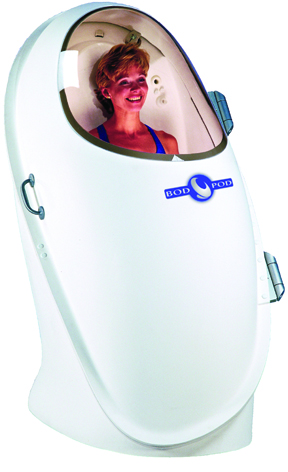 If you’re skeptical like me, you may have questioned some of the weight-loss methods you’ve seen in the media. After all, any diet that requires you to substitute steak for fruit salad is sure to be a hit, but how healthy can that really be?
If you’re skeptical like me, you may have questioned some of the weight-loss methods you’ve seen in the media. After all, any diet that requires you to substitute steak for fruit salad is sure to be a hit, but how healthy can that really be?
Amidst all the confusion a simple question remains: When looking to lose weight, what matters more? What you eat, or how much you eat? Here are some thoughts to share with overweight employees looking to make a change.
Tell Employees to Burn More Calories Than They Consume
Dr. David Katz, director of the Yale Griffin Prevention Research Center, seems to offer a simple answer. Dr. Katz points out that “The fundamental truth is that energy balance, calories in versus calories used, determines weight.” Put even more simply, the only way to lose weight is to burn off more calories than you consume. There’s really no mystery about calorie balance.
But it’s not quite that easy. How do you know if you should cut out carbs, pump up the protein, or follow any one of the many other suggestions out there along with eating less?
Nutritionist Mark Haub, an associate professor of nutrition at Kansas State University, answered these very questions with a unique experiment. For one month he ate a high-fat, high-sugar, low-nutrient diet consisting of Twinkies, Nutter Butters, canned or frozen vegetables, a protein supplement, steak, and milk averaging 1,800 calories per day. Believe it or not, he lost weight--15 pounds in the one-month experiment.
Tell Employees to Eat Less but Also Eat Healthy
So how much you eat has more bearing than what you eat--unless you actually want to lose weight in a healthy way.
The major problem with any diet is that you go on it, but eventually must come off of it. So unless you plan to maintain a diet the rest of your life, the odds are you will regain the weight you lost once you resume your normal eating habits.
The long and the short of it? Eat just enough of foods that are good for you and get on with the rest of your day!

 In my last post, I explained that functional capacity is exercising in a way that improves the ability to perform activities of daily living. In this post I look at how this concept is being used in senior fitness classes and corporate fitness programs--in place of more traditional but less efficient training.
In my last post, I explained that functional capacity is exercising in a way that improves the ability to perform activities of daily living. In this post I look at how this concept is being used in senior fitness classes and corporate fitness programs--in place of more traditional but less efficient training. Corporate wellness program members hear terms like BMI, body fat percentage, girth measurements, and waist-to-hip ratio floating around on a daily basis. There is more to a person's body composition than just the number on the scale, but what number matters the most? Let's compare body mass index (BMI) to body fat percentage.
Corporate wellness program members hear terms like BMI, body fat percentage, girth measurements, and waist-to-hip ratio floating around on a daily basis. There is more to a person's body composition than just the number on the scale, but what number matters the most? Let's compare body mass index (BMI) to body fat percentage. Although each day may technically be a new day, today brings the stresses of yesterday and the preparations of tomorrow. Nowadays a 40-hour work week is hard to come by, and going home without work is even harder to swing. With all of this added work comes added
Although each day may technically be a new day, today brings the stresses of yesterday and the preparations of tomorrow. Nowadays a 40-hour work week is hard to come by, and going home without work is even harder to swing. With all of this added work comes added  In previous posts, I have talked about functional capacity and how corporate fitness programs and senior fitness classes are using this concept to improve workouts and make them more beneficial to everyday life.
In previous posts, I have talked about functional capacity and how corporate fitness programs and senior fitness classes are using this concept to improve workouts and make them more beneficial to everyday life. Between inflation, the rise and fall of the stock market, never-ending projects at work, and screaming kids, there are plenty of things in a employee’s life that can lead them to feel overwhelmed. While we all feel this way from time to time, feelings of
Between inflation, the rise and fall of the stock market, never-ending projects at work, and screaming kids, there are plenty of things in a employee’s life that can lead them to feel overwhelmed. While we all feel this way from time to time, feelings of  Some people associate smoking with being thin, but thin doesn’t always mean healthy. Smoking does suppress your appetite, which helps to keep weight off. But do the health risks of smoking outweigh the negatives of being overweight?
Some people associate smoking with being thin, but thin doesn’t always mean healthy. Smoking does suppress your appetite, which helps to keep weight off. But do the health risks of smoking outweigh the negatives of being overweight? The majority of office cafeterias post nutrition information for numerous items they serve. But how many employees want to waste valuable lunch-break minutes searching for them or reading their microscopic fonts? I know I don't! I tend to go for the meal I think sounds the healthiest and pray that, when I plug the details of my meal into my online calorie counter, I don't find out I blew an entire day's worth of calories on one little lunch.
The majority of office cafeterias post nutrition information for numerous items they serve. But how many employees want to waste valuable lunch-break minutes searching for them or reading their microscopic fonts? I know I don't! I tend to go for the meal I think sounds the healthiest and pray that, when I plug the details of my meal into my online calorie counter, I don't find out I blew an entire day's worth of calories on one little lunch. Have you ever heard the recommendation that healthy adults should try to do 30 minutes of moderately intense exercise most days of the week to help maintain health and reduce the risk of heart disease? If you want to lose weight,
Have you ever heard the recommendation that healthy adults should try to do 30 minutes of moderately intense exercise most days of the week to help maintain health and reduce the risk of heart disease? If you want to lose weight,  In a tough economy, many of your employees are making logical changes in spending habits. They are probably taking fewer vacations, eliminating extras from TV subscription packages, and using e-mail more frequently to save a few cents on a stamp. One thing we hope your employees aren't sacrificing, however, is good, healthy and lightly processed food.
In a tough economy, many of your employees are making logical changes in spending habits. They are probably taking fewer vacations, eliminating extras from TV subscription packages, and using e-mail more frequently to save a few cents on a stamp. One thing we hope your employees aren't sacrificing, however, is good, healthy and lightly processed food.